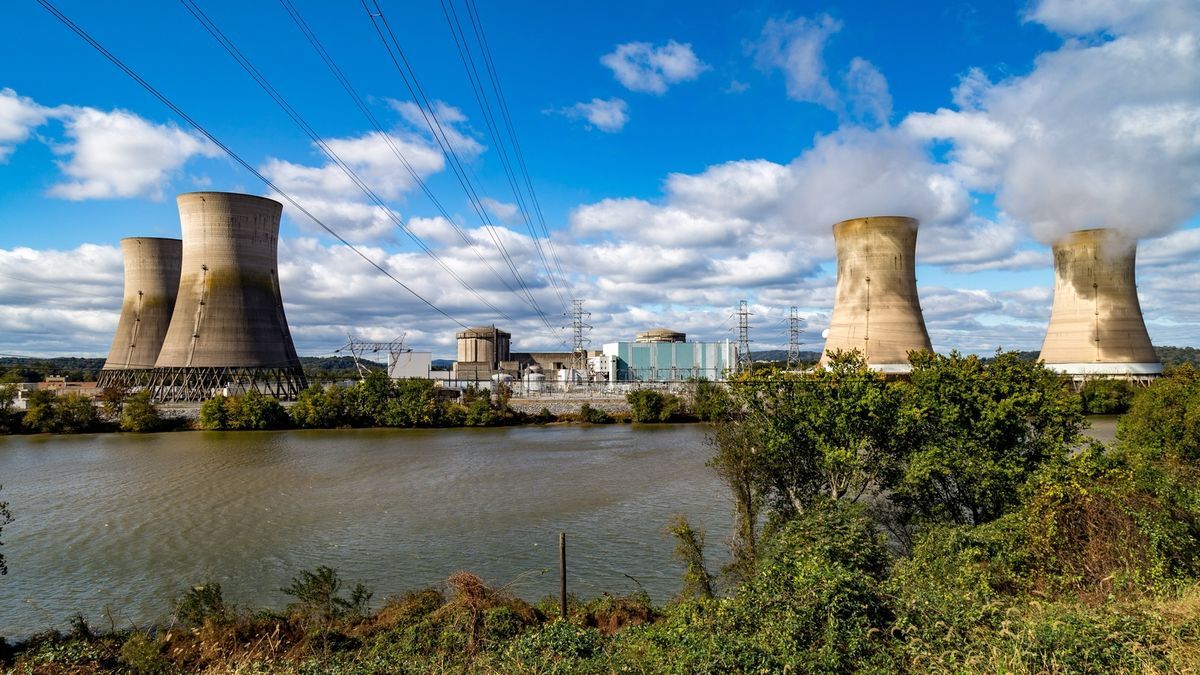Modern AI data centers consume enormous amounts of power, and it looks like they will get even more power-hungry in the coming years as companies like Google, Microsoft, Meta, and OpenAI strive towards artificial general intelligence (AGI). Oracle has already outlined plans to use nuclear power plants for its 1-gigawatt datacenters. It looks like Microsoft plans to do the same as it just inked a deal to restart a nuclear power plant to feed its data centers, reports Bloomberg.



Nuclear falls under ‘conventional’ - the PWR design of TMI is one of the oldest and most common types of nuclear reactor. It’s just another way of creating steam to drive a turbine which then generates electricity.
Nuclear is also anything but clean. People love to call nuclear ‘clean’ because its low in emissions, but that’s ignoring the requirement for either safe storage of radioactive material or reprocessing thereof, as well as the emission of radioactivity in the water cycled through the reactor.
Even if you call it conventional (I don’t think anyone would, but sure) it isn’t dirty. Dirty energy is stuff that releases pollution that isn’t contained. Nuclear releases water vapor and that’s all.
It is very clean. The radioactive material it produces that must be contained is very easy to contain safely. It really isn’t an issue. Check these videos out if you want to learn more about it. (The second video is another plant owned and operated by the same company that is being contracted here.)
https://youtu.be/4aUODXeAM-k?si=VhZ6LZJcA0HJsz2z
https://youtu.be/lhHHbgIy9jU?si=6Wn_1t-vNwSFYCMP
Edit: It’s also the cleanest and nearly the safest source of energy, including the disasters. https://ourworldindata.org/safest-sources-of-energy
I love how the ‘Death rates per unit of electricity production’ graphic highlights deaths from a 1975 dam break in China, therefore making hydro seem less safe than nuclear, when the dam in question up to that point hadn’t produced a single megawatt of electricity (and by the looks of it, still hasn’t to this day). At the same time it appears to conveniently ignore the increased mortality among uranium miners.
Equally then, the nuclear disasters shouldn’t count, right? No, we count everything, including the accidents, even if measures have been put in place to prevent them from happening again. The dam was made to produce electricity. The construction of that is still a factor in the deaths. Same with solar, coal, wind, nuclear, and everything else. If the deaths wouldn’t have happened otherwise then they are to blame.
How do you assume it’s ignoring their increased mortality?
Deaths from an accident at an active nuclear power plant are not the same as deaths caused by a burst dam that was originally intended to produce electricity one day, but has never produced any. Especially if you call the statistic ‘Deaths per unit of electricity production’. At the time of the accident, it was just a dam, construction of any hydroelectric facilities was nowhere near beginning, so calling it a ‘hydropower accident’ is highly debatable (probably as at least as debatable as calling nuclear ‘conventional’). Without the inclusion of those deaths, hydro would be shown to be even safer than nuclear, given that it has produced nearly twice as much electricity in the time span covered by those statistics, while having caused a similar number of deaths (if you continue to ignore the increased miner mortality, otherwise nuclear will look way worse). The article also does not cite how they determined the number of 171000 deaths, given that estimates for the Banqian dam failure range between 26000 and 240000. The author mentions (but does not cite) a paper by Benjamin Sovacool from 2016, which analyzes the deaths caused by different forms of energy but, crucially, omits the Banqian dam death toll. I will try to get hold of that paper to see the reasoning, but I suspect it may align with mine.
The article makes zero mention of any such thing, and the section about how the deaths are calculated (footnote 3 in this section) only calls out the deaths from Chernobyl and Fukushima. Direct quote from the footnote:
No mention at all of any other deaths or causes of death, nothing whatsoever. It’s the deaths from two nuclear accidents, that’s all. The figures from the cited study alone would multiply the number of nuclear deaths in this statistic. What’s worse, the author has published another article on nuclear energy which essentially comes to the exact same conclusions. But if you include deaths from a burst dam that has never produced electricity (but was planned to do so eventually), then you must include deaths among people who mine the material destined to produce electricity in a nuclear plant.
To me it simply looks like the author of this article is highly biased towards nuclear, and has done very selective homework.